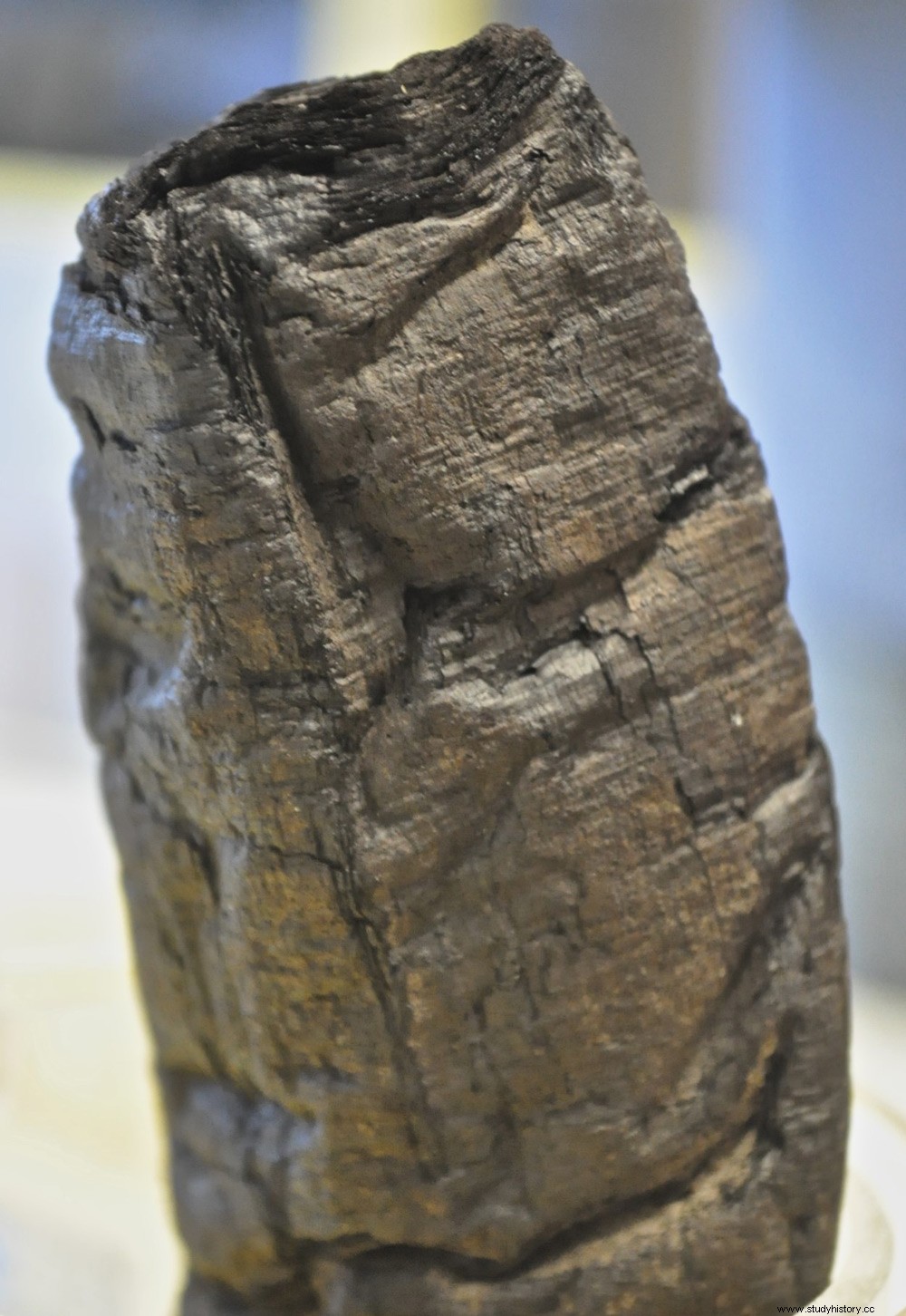 Greek letters. The use of X-ray fluorescence (ESFR) has discovered significant concentrations of lead in the ink of the Herculaneum papyri, which was unknown.
Greek letters. The use of X-ray fluorescence (ESFR) has discovered significant concentrations of lead in the ink of the Herculaneum papyri, which was unknown. IMAGERY. Launched since 2015 in study work to try to penetrate the heart of the charred papyri found in the villa of the Papirii in Herculaneum without having to unroll them, the scientists had a huge surprise:to discover, thanks to the X-ray imaging techniques of the Synchrotron (ESRF) of Grenoble, that the chemical composition of the ink used at the time contained… high levels of lead. An unexpected additive that scientists thought had only been in common use since the Middle Ages! This discovery is described in an article in the scientific journal PNAS. “ We thought that the composition of the ink used to write on the Greco-Latin papyri was only carbon-based! It was indeed established that metallic inks did not appear before the 5th century AD and that they only became the norm in the Middle Ages during the transition from papyrus to parchment. The latter being made of skin, it was thought that the scribes had been forced to add iron to the ink so that it would stick better to the support. We then spoke of metallo-gallic or ferric ink", explains Daniel Delattre, research director emeritus at the CNRS and the Institute for Research and History of Texts, in Paris.

Close-up of a papyrus roll (volumen ) charred from Herculaneum. © Emmanuel Brun
In ancient times, ink was obtained from smoke residues. Large amounts of soot were produced by burning coal in smooth-walled rooms, and then scraped off the walls. Mixed with gum arabic, it was made into small pebbles then diluted in water to obtain ink. "This is the recipe given by Vitruvius , at 1 st century BC. J.C, confirmed by the naturalist and philosopher Pliny the Elder in the 1 st century AD. There had never been any mention of metal inside the inks! », Specifies the papyrologist. How, then, to explain the presence of lead in the papyri of Herculaneum? “We first thought that it could be traces of lead linked to the transport of water necessary for the transformation of the ink ( The Roman pipes were made of lead, editor's note). Then we thought of the inkwells which, containing lead, could have polluted the ink. But the quantities found during recent chemical analyzes have proven that it was a deliberate addition », adds Daniel Delattre.
For specialists, this discovery opens up new avenues of exploration in an attempt to decipher the charred documents of Herculaneum, the only library that has come down to us directly from antiquity. The X-ray technique playing on the difference in the refractive indices of the ink and the charred papyrus having proved effective, the presence of the metallic ink increased the effects of contrast. "Thanks to the presence of metallic lead pigments, the texts buried in the heart of the scrolls will be even better read by the X-rays of the Grenoble Synchrotron" , explains Daniel Delattre.
Very fragile documents
Of the 1785 manuscripts discovered between 1752 and 1754 in the city of Herculaneum destroyed along with Pompeii by the eruption of Vesuvius in 79 CE, only 585 could be completely unrolled using a mechanical method. A large number literally ended up in pieces during these operations and 400 could never be unrolled. All of these documents are kept at the National Library of Naples. The two fragments analyzed come from a Herculaneum papyrus given to Napoleon Bonaparte by the King of Naples in 1802. They now belong to the collection of the Institut de France.
